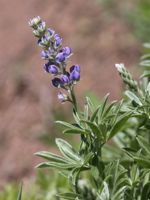Mon-Fri 9am - 5pm Mountain time
Majestic Magenta Phlox vs Silky Lupine
Phlox Majestic Magenta
Lupinus sericeus
NOT AVAILABLE THIS SEASON - MIGHT RETURN
CUSTOM GROW
The Majestic Magenta is a compact ground cover plant that blooms with small, rich magenta flowers in early to mid spring. In spring expect an abundance of these star-shaped flowers.
The Majestic Magenta attracts the attention of birds and butterflies and this plant is popular for it’s low maintenance and salt-tolerance.
Silky Lupine is a native perennial wildflower known for its upright spikes of blue to violet flowers. Blooming from late spring into summer, the nectar-rich, showy blossoms attract a variety of pollinators, especially bees and butterflies. The plant’s fine, silky foliage provides soft texture and visual interest, enhancing landscapes throughout the growing season.
Silky Lupine is a nitrogen-fixing plant that enriches soils and supports surrounding vegetation. Its deep roots stabilize soil, and it spreads naturally by ejecting seeds from drying pods. If spread isn’t desired, new seedlings are easy to remove. While it is foraged by some wild animals, it contains alkaloids that are toxic to livestock. Silky Lupine is well-suited to pollinator gardens, naturalization plantings, erosion control, and ecological restoration projects.
Majestic Magenta Phlox Quick Facts
Silky Lupine Quick Facts
Toxicity: toxic to sheep and other livestock

